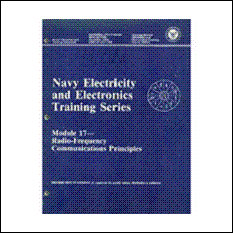Stable Display
COMPONENTS USED TO PROVIDE A STABLE DISPLAY
The triggering and level controls are used to synchronize the sweep generator with the input signal. This provides a waveform with a stable display . If the input signal and horizontal sweep generator are unsynchronized, the pattern tends to jitter, making observations difficult.
The A TRIGGER controls at the lower right of the scope (the figure below) are used to control the stability of the oscilloscope and provide a clean display. They are provided to permit you to select the source, polarity, and amplitude of the trigger signal. These controls, labeled A TRIGGER, LEVEL, SOURCE, and SLOPE, are described in the following paragraphs.

Components that control stability.
SOURCE Control
The SOURCE control allows you to select the appropriate source of triggering. You can select input signals from channel 1 or 2, the line (60 hertz), or an external input.
TRIGGER LEVEL/SLOPE Controls
The LEVEL control allows you to select the amplitude point of the trigger signal at which the sweep is triggered. The SLOPE lets you select the negative or positive slope of the trigger signal at which the sweep is triggered.
The TRIGGER LEVEL (mounted with the TRIGGER SLOPE on some scopes) determines the voltage level required to trigger the sweep. For example, in the TRIGGER modes, the trigger is obtained from the signal to be displayed. The setting of the LEVEL control determines the amplitude point of the input waveform that will be displayed at the start of the sweep.
The figure below shows some of the stable displays for a channel that can be obtained for different TRIGGER LEVEL and TRIGGER SLOPE settings. The level is zero and the slope is positive in view A; view B also shows a zero level but a negative slope selection. View C shows the effects of a positive trigger level setting and positive trigger slope setting; view D displays a negative trigger level setting with a positive trigger slope setting. Views E and F have negative slope settings. The difference is that view E has a positive trigger level setting, whereas F has a negative trigger level setting.

Effects of SLOPE and TRIGGER-LEVEL controls.
In most scopes, an automatic function of the trigger circuitry allows a free-running trace without a trigger signal. However, when a trigger signal is applied, the circuit reverts to the triggered mode of operation and the sweep is no longer free running. This action provides a trace when no signal is applied.
Synchronization is also used to cause a free-running condition without a trigger signal. Synchronization is not the same as triggering. TRIGGERING refers to a specific action or event that initiates an operation. Without this event, the operation would not occur. In the case of the triggered sweep, the sweep will not be started until a trigger is applied. Each succeeding sweep must have a trigger before a sweep commences. SYNCHRONIZATION, however, means that an operation or event is brought into step with a second operation.
A sweep circuit that uses synchronization instead of triggering
will cause a previously free-running sweep to be locked in step with the
synchronizing signal. The TRIGGER LEVEL control setting can be
increased until synchronization occurs; but, until that time, no stable
displays or stable patterns will appear on the CRT face.
COUPLING Section
The COUPLING section allows you to select from four positions: AC, LF REJ, HF REJ, and DC. The AC position incorporates a coupling capacitor to block any dc component. The LF and HF REJ positions reject low- and high-frequency components, respectively. The DC position provides direct coupling to the trigger circuits. This is useful when you wish to view only the LF or HF component of a signal.

















